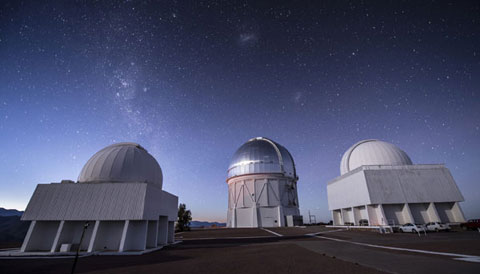
The mysterious dark photon will be hunted by the Positron Annihilation into Dark Matter Experiment (PADME) in Italy, which will start collecting data in the next couple of weeks.

The Planck mission launched in 2009 has finally reached its ending point. So far the standard model of cosmology has survived all the tests.

While there is no physical evidence that parallel universes exist, the theories that explain how our universe came to be seem to suggest that they are inevitable.

A tiny fraction of dark matter could have a charge, allowing it to interact with regular matter during the time between the Big Bang and formation of the Cosmic Microwave Background, some physicists say.

An international team of researchers using the NASA/ESA Hubble Space Telescope and several other observatories have, for the first time, uncovered a galaxy that is missing dark matter.

A small team of researchers announced that its correspondingly small telescope picked up a signal produced by the very first stars in our Universe.

Lengthy observations by the Hubble Space Telescope indicate the universe is expanding faster than predicted by standard models and that Einstein’s cosmological constant, thought by many to define dark energy, may not be so constant after all.

The simulation consists of 18 simulations covering various scales - each a cubic mock-up of space up to 1 billion light years wide - tracing the evolution of the Universe from just after the Big Bang into the future.

Results from the first data release of the Dark Energy Survey include eleven new stellar streams in the Milky Way galaxy.

The Xinjiang Qitai 110-meter Radio Telescope ( QTT ) could help advance research on dark matter, gravitational waves, and extraterrestrial intelligence.

Merging Neutron Stars Challenge Existing Theories of Gravity and Dark Energy.

The experiment has directly detected a sudden drop-off in the electrons hitting the satellite.

New research is adding some deeper insight into the mysterious repulsive force known as dark energy, providing evidence that whatever it might be, its ghostly influence hasn't been constant over time.

Dark Energy Survey scientists unveiled the most accurate measurement ever made of the present large-scale structure of dark matter in the Universe.

A team of astrophysicists from UZH has simulated the formation of the entire Universe, producing a catalog that will help unlock the secrets of the "Dark Universe".